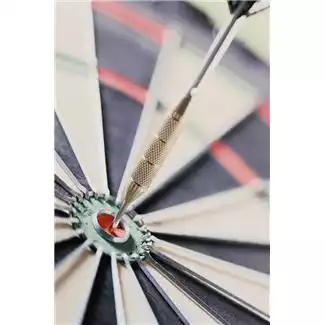Principles for Teaching QR
Jump down to: Consider the social construction of numbers | Ask students to communicate | Use active learning | Don't forget that small can be beautiful
There are several principles for teaching QR that will help you and students remain on track to learn the kinds of skills you are interested in teaching them without getting buried in complicated calculations or endlessly long tasks.
- Emphasize accuracy relative to precision
- Consider the social construction of numbers--and then help students get past it
- Ask students to communicate about their quantitative work
- Use active learning to make students "get their hands dirty"
- Don't forget that small changes can have large impacts
1. Emphasize accuracy relative to precision

Encourage your students to embrace this reality and be prepared for some resistance. Many students immediately associate quantitative work with their experience in traditional math courses in which problems often have only two types of answers: exactly right and wrong. (Of course, in advanced mathematics the reality is far more complex, but that is not the typical student's experience.) As a result, they may initially stumble when asked to make rough estimates or to analyze the quality of someone else's back-of-the-envelope calculation.
Of course, data can be so imprecise that it effectively fails to answer our questions. For example, if the data only shows if a family's income is above or below $75,000 then a student will not be able to answer many important questions about class. Recognizing these limitations is certainly part of the QR discipline. But the point here is that there are many times when being "approximately accurate" is more valuable than being precisely wrong.
Require students to make rough estimates. Give them problems for which you intentionally withhold some information which they have to "guesstimate." Give assignments in which students collect samples of data, and then show them how to present their findings with appropriate recognition of the limitations implied by their data gathering.
2. Consider the social construction of numbers--and then help students get past it
In his book More Damned Lies and Statistics Joel Best explores the social process that determines what we count (or don't) and how. While Best does acknowledge that some numbers are intentionally slanted or cherry-picked, his focus is on the more mundane realities--that all variables have to be defined by someone, that our minds are pre-disposed to look for causal connections even though often a correlation is not causal, that numbers carry with them an authority that may be greater than the strength of the data.
When first encountering these facts students can easily slip into Twain's unconstructive cynicism referred to in Best's book title, concluding that numbers are always the worst of lies. If we leave them in this half-baked QR state of mind we have done them a great disservice. By engaging them in active learning, we can move through this early stage of learning to a better and more balanced perspective in which they take a critical perspective that questions numerical evidence while remaining open to its power. Force students to make data-based arguments of their own (whether in essays, spreadsheets or charts & graphs). In the process they will come to learn that social construction is inevitable; it is literally impossible to say anything quantitative without making many important choices. But they will also learn that there are better and less sound ways of making those choices.
3. Ask students to communicate about their quantitative work
To become fully quantitatively literate, students must be able to communicate their quantitative arguments. A first step in this process is being able to analyze the quantitative analysis presented by others...and newspapers provide great opportunities for that every day. But even after learning to see shortcomings in others' work, students can struggle to make good communication choices themselves. Because quantitative communication takes many forms, you can work on this in multiple contexts including:
- Quantitative writing assignments
- Activities based in spreadsheets (And here is a second collection of spreadsheet activities.)
- Asking students to create visual representations of data
- Oral presentations or posters
4. Use active learning to make students "get their hands dirty"
Studies show that most students learn more when engaged in active learning. Don't simply show them how to work with numbers; let them get involved. In disciplines in which it is appropriate, consider involving students in the data collection process. Here are a few ideas on how you might do that (with links to more detailed information on each pedagogical method):
- Teach with data or data simulations
- Role play in a case study
- Give students a data "jigsaw"
- Have students work through a context rich problem
- Work with data visualizations
- Give quantitative writing assignments
5. Don't forget that small changes can have large impacts!
Quantitative reasoning is a habit of mind--an instinct to consider how quantitative analysis might shed light on a problem. That habit can be exemplified and nurtured in small "moves" in the classroom.
QR does not have to be the focus of your entire course to contribute to the cause. One assignment, one course module, or a steady trickle of QR-exemplified work will help move us toward the goal. "Becoming a writer" is not a single event; it is a life-long process that will be supported across many courses. The same is true of the QR habit of mind. No one of us needs to try to accomplish everything--we need only do our part, the part that fits naturally within the contexts of our discipline and our course.
